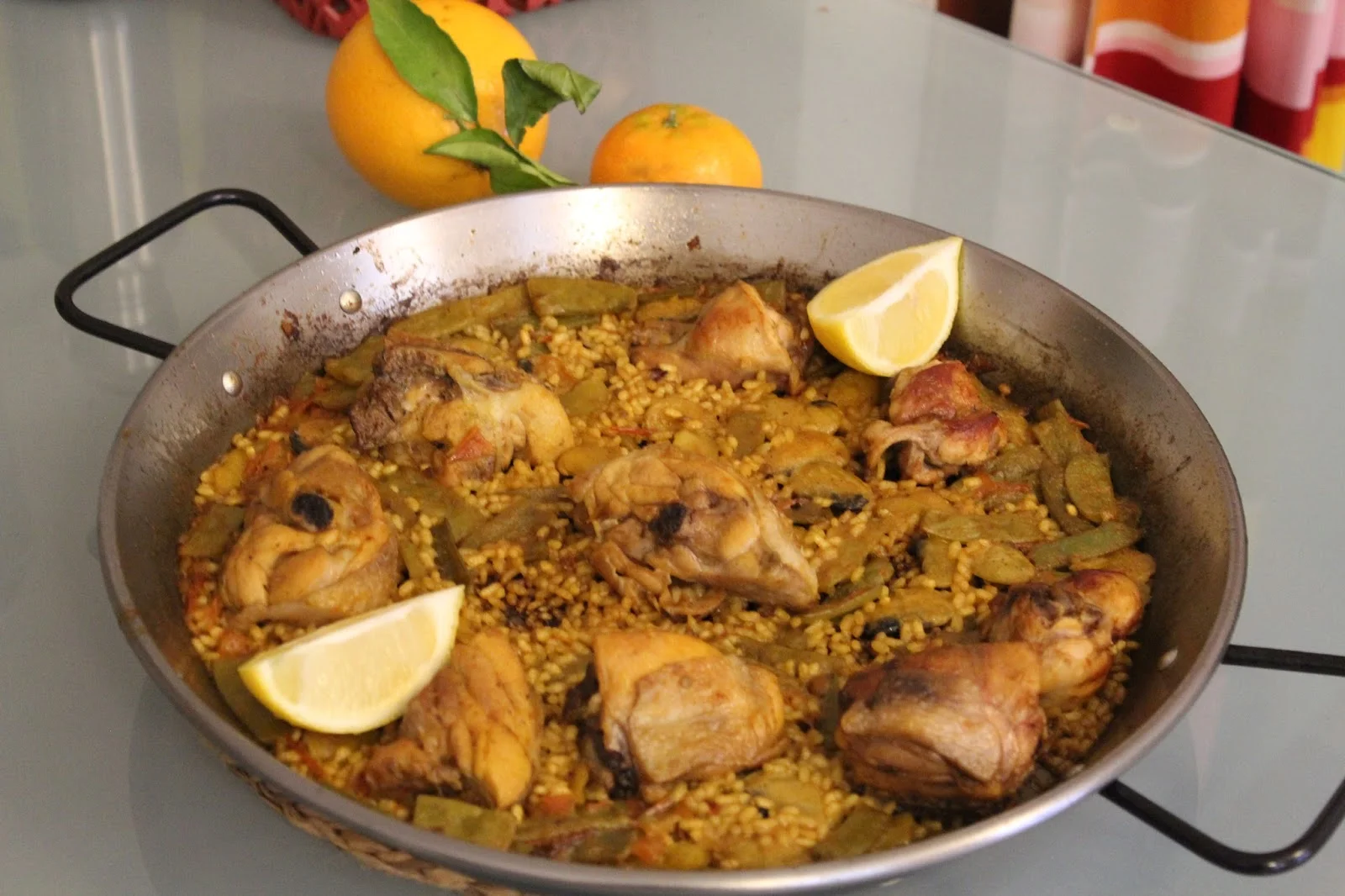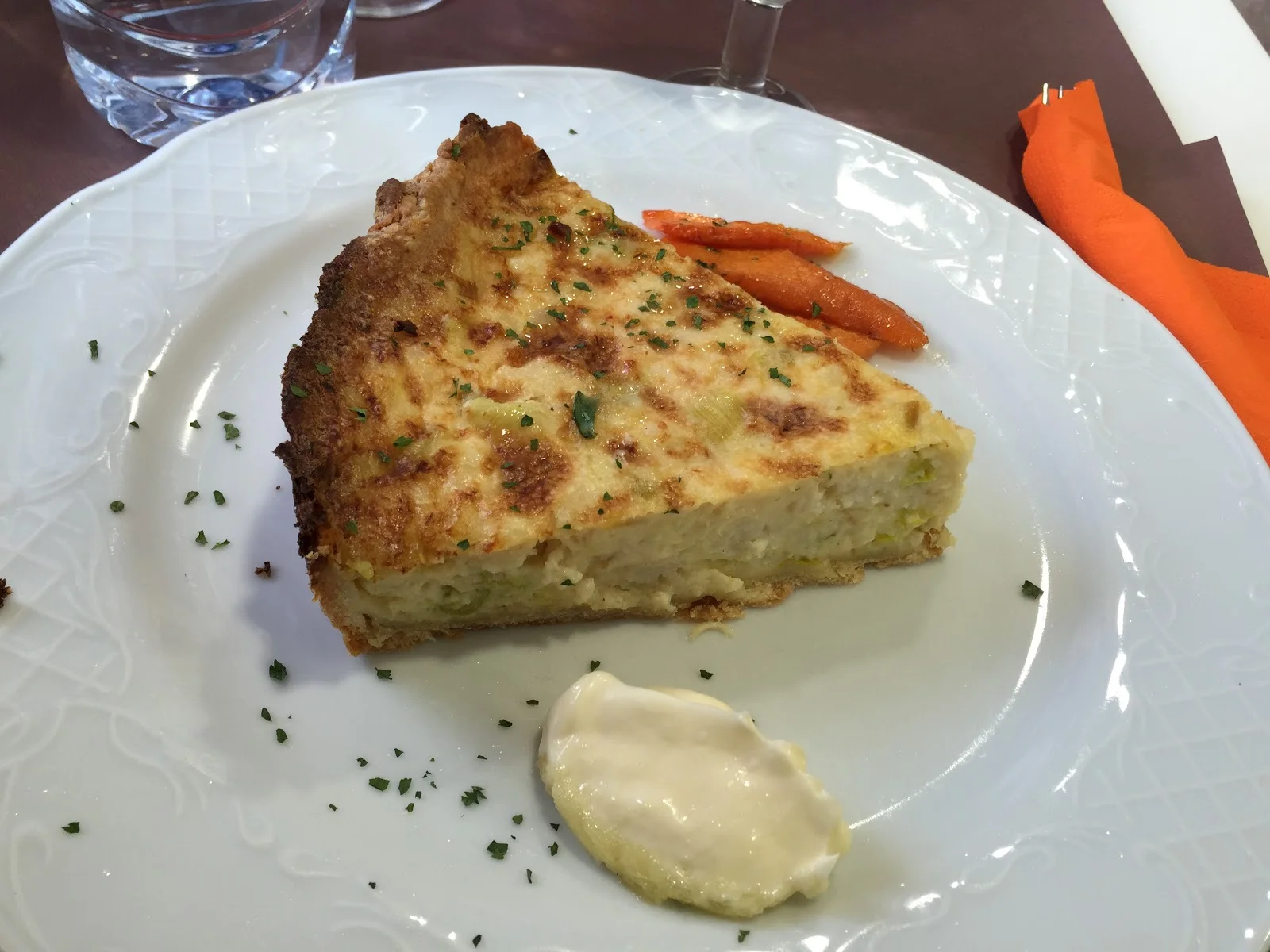Valencia Eats: Guide to paellas (and more!)
Valencia is the birthplace of paella, but what is it exactly? I read recipes of paellas, and see paellas on restaurant menus around the world, but I'm sometimes shocked by what ingredients are in them.
Valencianos are very orthodox about paellas, but on the other hand, there is room for variations within bounds. Some boundaries include mixing seafood and land-based animals in a paella. Paella is made with the broth of the meat, so surf and turf paella is as strange as a fish and pork broth. I also see people put chorizo in recipes, but this would be very strange to see in Valencia.
The typical paella valenciana has chicken, rabbit, flat green beans, large white beans like huge lima beans, and occasionally snails. You see the paella below served with lemon wedges. It is actually quite controversial to put lemon on the paella. Purists say that it kills the flavor, but I myself like a squeeze of lemon.
Here is an arroz negro, which is made with bits of squid and prawns. It gets its color from the squid ink. Paella is in a category called arroces, which also includes rice-based dishes such as this one. Seafood based rices are sometimes served with aioli, but aioli is never served with land-based animal paella.
My friends from towns south of Valencia sometimes make paella with balls of sausage. When I told my friends from towns north of Valencia that I tried this, they looked at me strange, told me that this is never done, and asked me if the cook had invented that on her own, as if she had gone rogue. Even people from the different parts of Valencia have their own orthodoxies!
Occasionally you may even find a red paella! I'm pretty sure this is artificial coloring - think red velvet cake. Paellas traditionally get their yellow color from saffron, which is how I make it, but in all of the friends' and relatives of friends' homes where I've seen paella being made, I've never seen anyone use saffron. Only powdered coloring which is much cheaper and faster than saffron. Also very common are sachets with various spices plus the colorant which makes things even easier.
Arroces can sometimes be ordered seco or meloso, dry or soupy. I personally prefer dry, cooked in the wide paella pan like in the first three pictures. My favorite part is the socarraet, or the burnt/toasted rice at the bottom of the dish. But arroz meloso is also quite nice, especially in the winter. This one below basically has all of the same ingredients as a paella valenciana, just in soupy form.
Another dish that is not an arroz, but you will find side by side on arroz menus, is fideuà. It's not made from rice, but from tiny thin noodles, and seafood like prawns, mussels, and cuttlefish. A common fish paella is cod and cauliflower, and another is arroz a banda made with shrimp and hake.
Finally there is gazpacho manchego. As you can see it's not anything like the cold tomato soup called gazpacho. This is made with dried up flatbread instead of rice or noodles. Traditionally people use torn up stale flatbread (I saw a video in the Museum of Ethnology in Valencia about this!), but nowadays people buy bags of the dry flatbread, like crackers, in the supermarket. After cooking in the broth, the pieces become al dente and chewy.
So there you have it: the wide variety of rice, noodle, and flatbread dishes all orbiting around the traditional Valencian paella!





